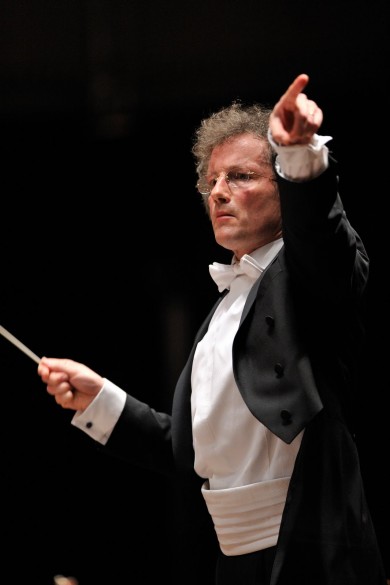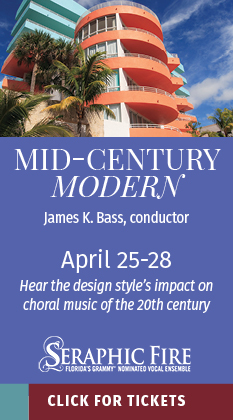Cleveland Orchestra in prime form with Beethoven and Shostakovich
“Fate and Freedom” was the thematic thread for pairing symphonies of Beethoven and Shostakovich at this weekend’s concerts in Miami by the Cleveland Orchestra. Beethoven’s 19th-century ideals and Shostakovich’s battles with the Soviet cultural bureaucracy for artistic freedom certainly influenced their musical output.
Even without historical, social and political connotations, Saturday night’s performances at the Arsht Center of the most popular of all symphonies and a 20th-century classic found the Clevelanders in prime form under music director Franz Welser-Möst.
While Beethoven’s Symphony No. 5 is probably the most frequently played work in the genre, it rarely is rendered with the corporate sheen and attention to detail offered by Welser-Möst and his ensemble. From the iconic opening motif, tempos were taught, yet flexible; orchestral balances superbly controlled. In a flowing reading of the Andante con moto, at times the dynamic level was brought down to bare audibility and the big brass proclamations were mellow, bereft of harshness.
The basses and lower strings played the famous trio in the Scherzo with unusual clarity at Welser-Möst’s fast clip while the crescendo leading to the first triumphal chords of the finale was built in gradual layers, the variations of volume and instrumentation sharply differentiated. There was nothing blatant or band-masterish about the final Allegro, Welser-Möst drawing out Beethoven’s inner voicing and minute instrumental colors up to the final chords.
Shostakovich’s Symphony No. 10 in E minor was composed in the immediate months following the death of the Soviet dictator Joseph Stalin. In many ways, the score is a summation of an era. Connotations of Stalin’s reign of terror aside, the symphony is one of the composer’s greatest works. The synthesis of drama, irony and nationalism that Shostakovich so masterfully blended is front and center in the Tenth Symphony.
The opening Moderato is the longest movement in the fifty-minute work. Welser-Möst’s initial tempo was slow, the music gradually gathering intensity with an ominous tread beneath the calm surface. The bleak waltz theme found the strings in lustrous form and the sudden cries of the woodwinds were fierce, deliberately projected with velocity. Unleashing the orchestra’s full firepower in climactic flourishes, Welser-Möst superbly conveyed the storm clouds that roll through the long musical paragraphs. An insistent snare drum and clashes of symbols highlighted stellar playing by the crack percussion unit and Joshua Smith’s flute, alternately silver toned and harsh, took special honors among outstanding solos by the winds.
The second movement is a wild Russian dance constantly going off the rails, driven at full throttle by Welser-Möst. Even during the brass salvos, the string sound was clear and audible, an omnipresent force. Dynamic contrasts were wide, the strings’ soft playing at top speed an impressive demonstration of orchestral virtuosity and discipline.
The repetitive theme of the Allegretto turns into a macabre waltz motif, the winds and percussion battery adding color. The sudden interruption by solo horn changes the mood and suggests Mahlerian overtones. The mix of dark pathos and sarcasm was conveyed in vivid colors with superb playing from all sections.
Welser-Möst brought out the mock triumphalism in the finale, the intensity unabated through changes of meter and instrumental color. The symphony’s dramatic arc was splendidly served and the standing ovation that followed well earned.
The Cleveland Orchestra’s Miami residency continues 8 p.m. Friday and Saturday at the Arsht Center with Franz Welser-Möst conducting Mahler’s Symphony No. 6. arshtcenter.org; 305-949-6722.
Posted in Performances
Leave a Comment
Sun Mar 1, 2015
at 1:06 pm
No Comments





